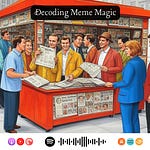Source:
Padigar, M., Li, Y., & Manjunath, C. N. “Good” and “bad” frictions in customer experience: Conceptual foundations and implications. Psychology & Marketing. https://doi.org/10.1002/mar.22111
In the latest episode of Marketing Science Lab, we take a deep dive into groundbreaking research that challenges conventional wisdom about frictionless customer experiences. The study, "Good" and "bad" frictions in customer experience: Conceptual foundations and implications" by Padigar, Li, and Manjunath, published in Psychology & Marketing, offers a nuanced perspective on the role of friction in customer journeys.
Redefining Friction in Customer Experience
For years, businesses have strived to create seamless, frictionless experiences, assuming that customers always prefer effortless interactions. However, this new research suggests that not all forms of friction are detrimental. In fact, some types of friction can enhance customer value and create more memorable brand experiences.
The study defines friction as the effort customers exert to complete tasks related to their consumption goals. Importantly, friction isn't inherently good or bad; it's a characteristic of the experience when completing a goal-related task.
Four Types of Friction: A New Typology
We explored the four distinct types of friction identified by the researchers:
Frustrating Friction: Low desirability, low value Example: Complicated checkout processes or unclear return policies
Constructive Friction: Low desirability, high value Example: Security checks for large purchases or setting up privacy settings
Preference-based Friction: High desirability, low value Example: Optional customization features or social sharing options
Rewarding Friction: High desirability, high value Example: Physical exertion at theme parks or DIY furniture assembly
Understanding these friction types allows marketers to make informed decisions about which elements of the customer journey to streamline and which to enhance for added value.
The Paradox of Effort: When Friction Adds Value
One of the most intriguing insights from the research is the concept of "good friction." We discussed how certain types of effort can actually increase customer satisfaction and perceived value. For instance:
The "IKEA effect" demonstrates how assembling furniture can increase its perceived value
Theme park experiences often benefit from the physical exertion and anticipation built through queues
Fitness apps leverage effort tracking and progress monitoring to enhance user motivation
However, it's crucial to note that even "good" friction has an optimal level. Too little effort can make an experience forgettable, while too much can lead to frustration. Finding the right balance is key to designing effective customer journeys.
Implications for Digital Marketers
This research has significant implications for how we approach customer experience design in the digital realm:
Reassess Frictionless Strategies: Don't blindly remove all friction from customer journeys. Analyze each touchpoint to determine if friction could add value.
Leverage Constructive Friction: Use necessary but low-desirability tasks as opportunities to educate customers and build trust. For example, clearly communicate the value of security measures during online transactions.
Enhance Core Experiences: For rewarding friction, find the optimal level of effort that enhances satisfaction without overwhelming customers. Consider offering different difficulty levels or customization options in digital products.
Create Optional Engagement: Implement preference-based friction as opt-in features to boost engagement without alienating time-constrained customers. Examples include loyalty programs or advanced customization options.
Monitor and Adapt: Regularly assess how customers perceive different types of friction in your digital journey. Be prepared to adjust as technologies and customer expectations evolve.
Challenges and Future Directions
We also explored some of the challenges in implementing this nuanced approach to friction:
Customer Heterogeneity: Friction tolerance varies among individuals and contexts, necessitating flexible journey designs.
Technological Advancements: AI and automation may shift which tasks customers find valuable or necessary, requiring continuous adaptation of friction strategies.
Ethical Considerations: Balancing frictionless experiences with customer welfare and informed decision-making, especially in AI-driven journeys.
As we navigate an increasingly digital and automated world, this research reminds us of the importance of human factors in customer experience. By thoughtfully considering when and how to incorporate effort into customer journeys, marketers can create more engaging, memorable, and valuable experiences that stand out in a sea of frictionless interactions.














